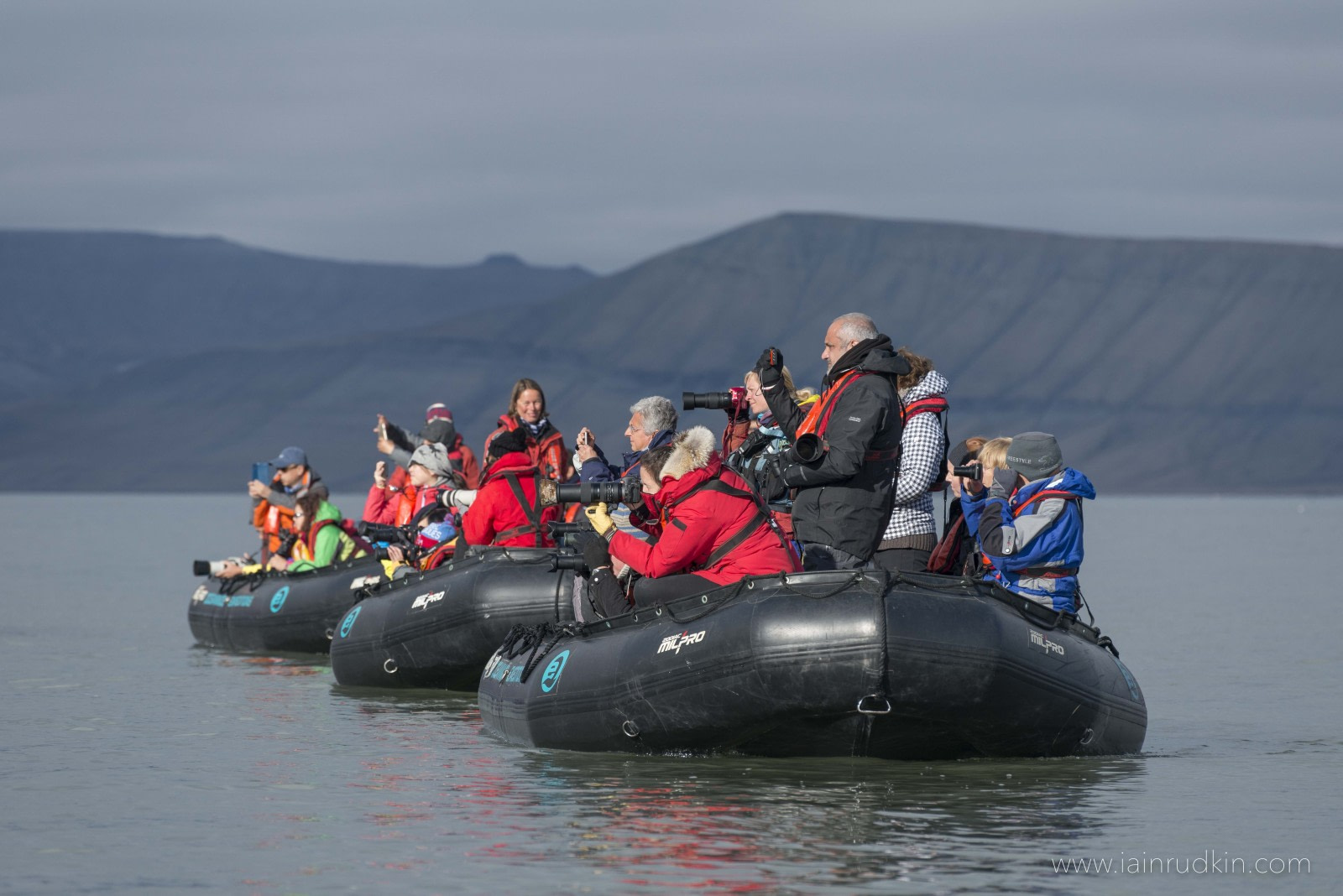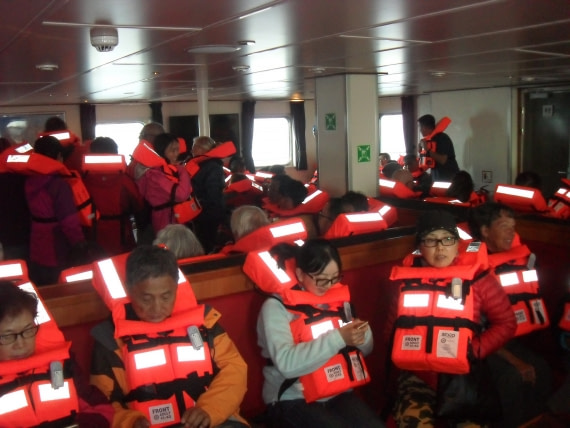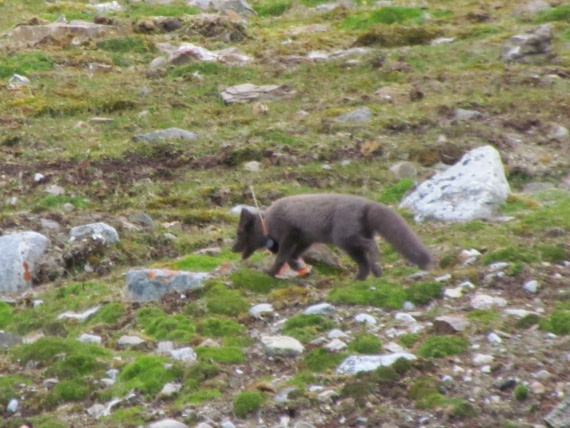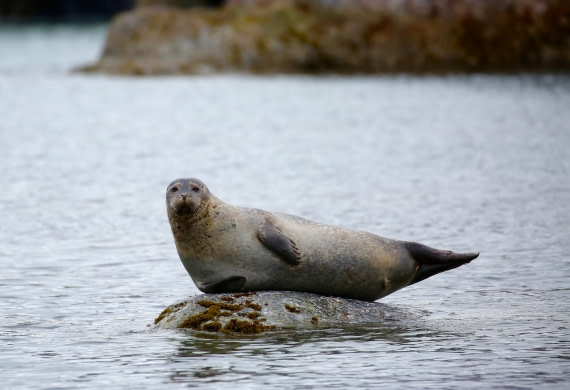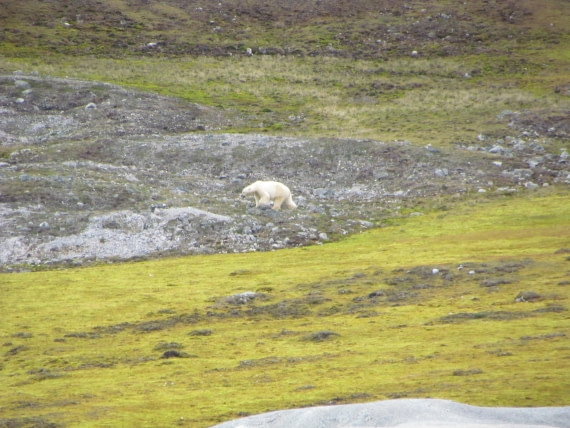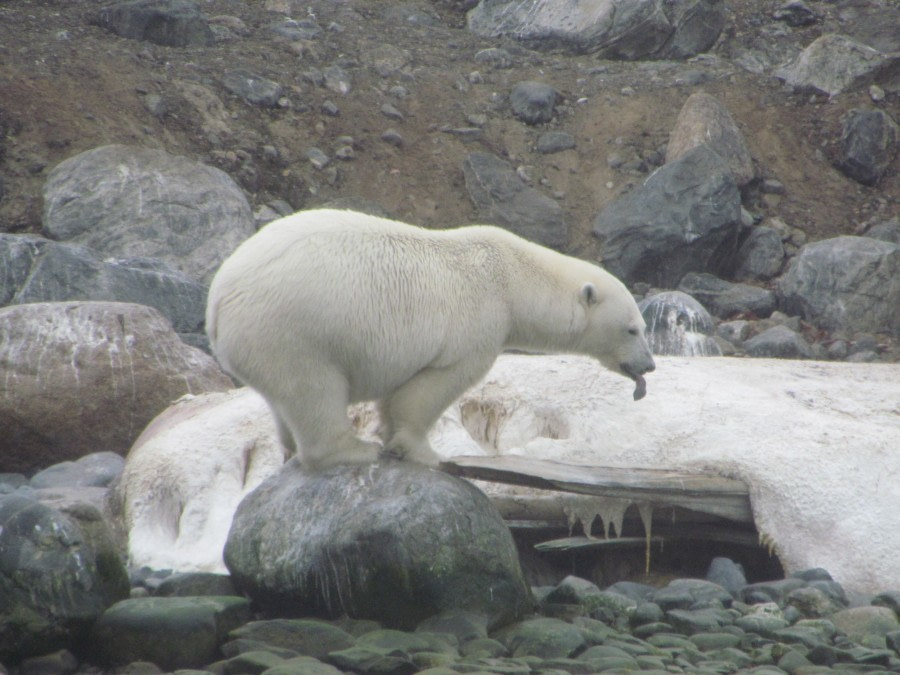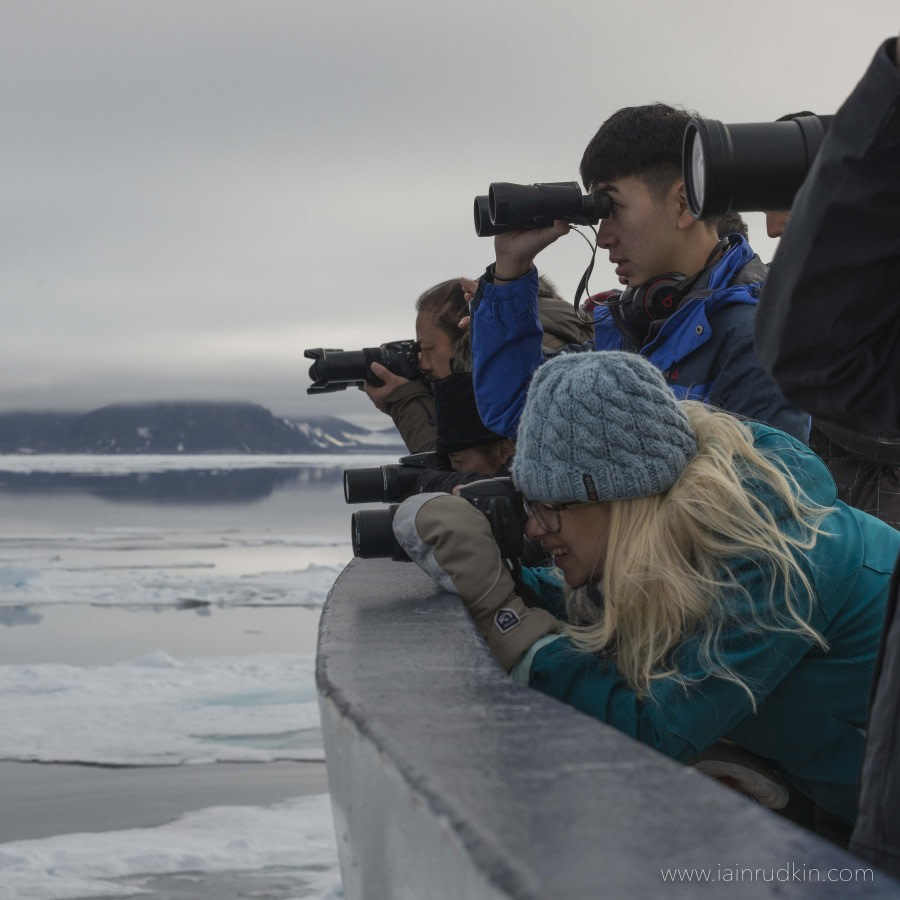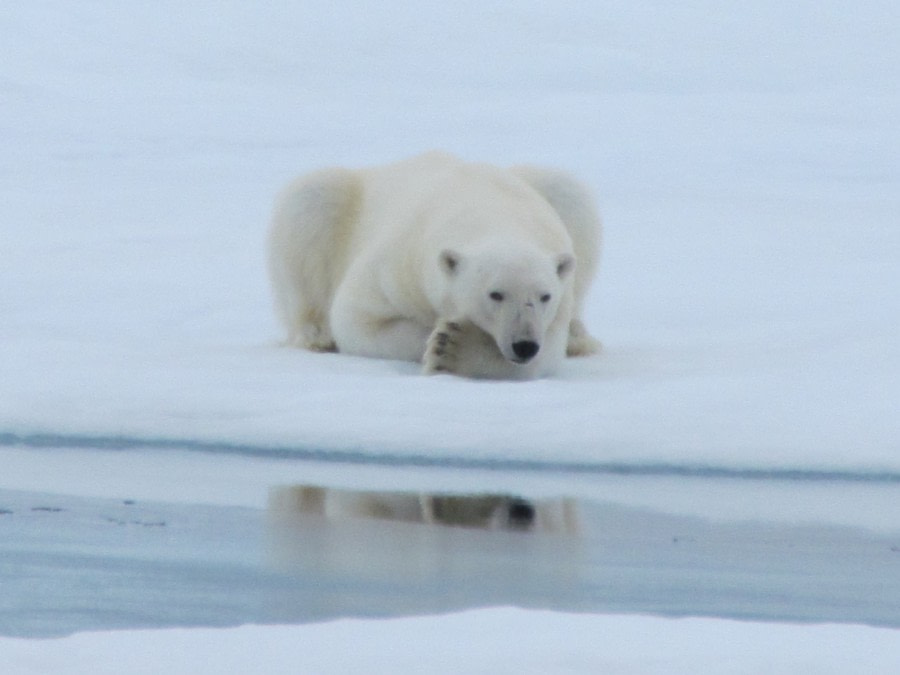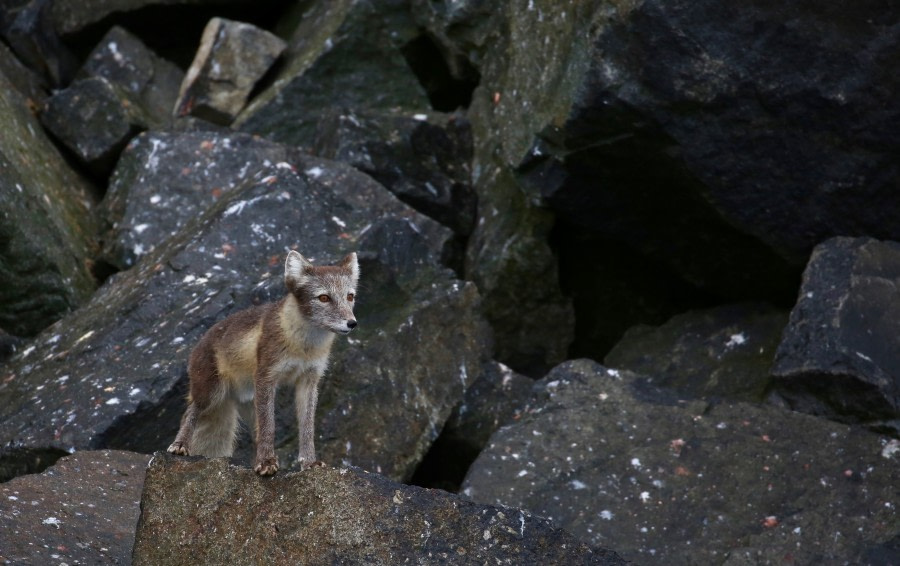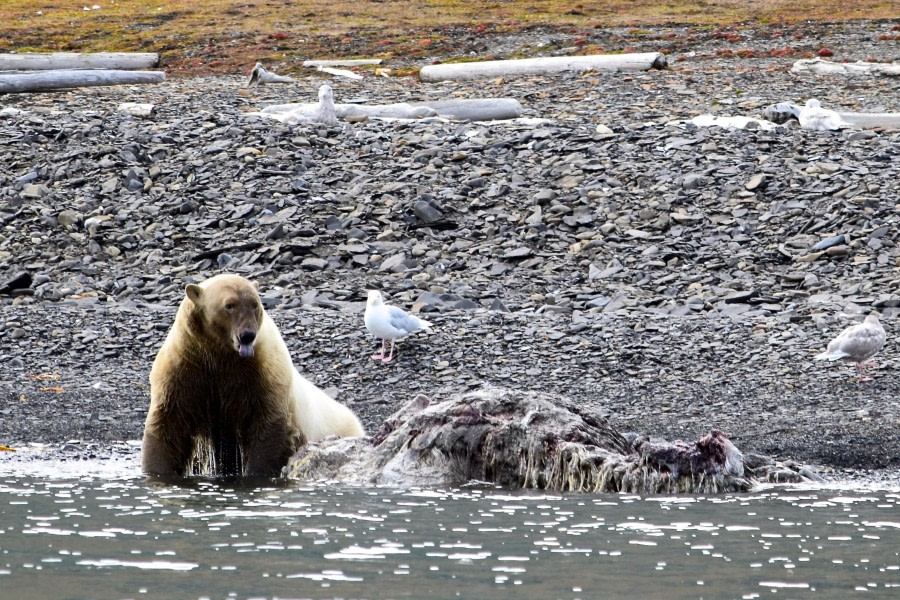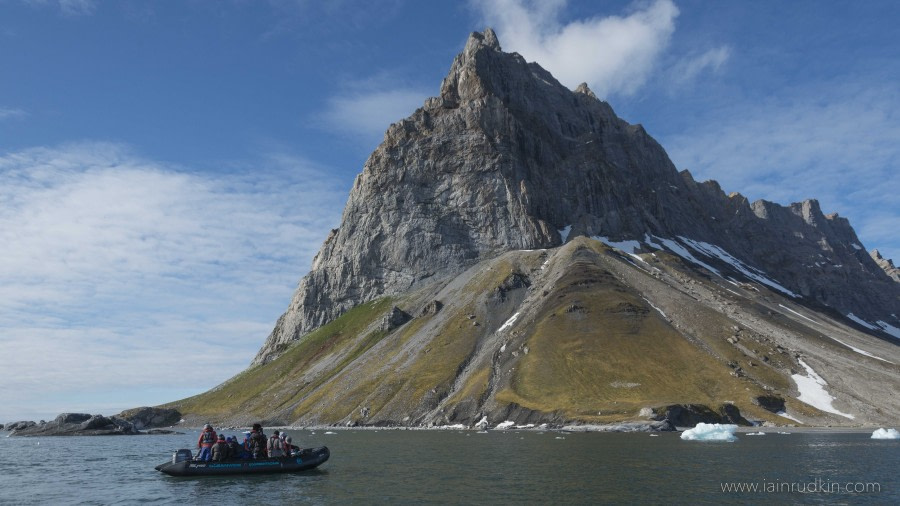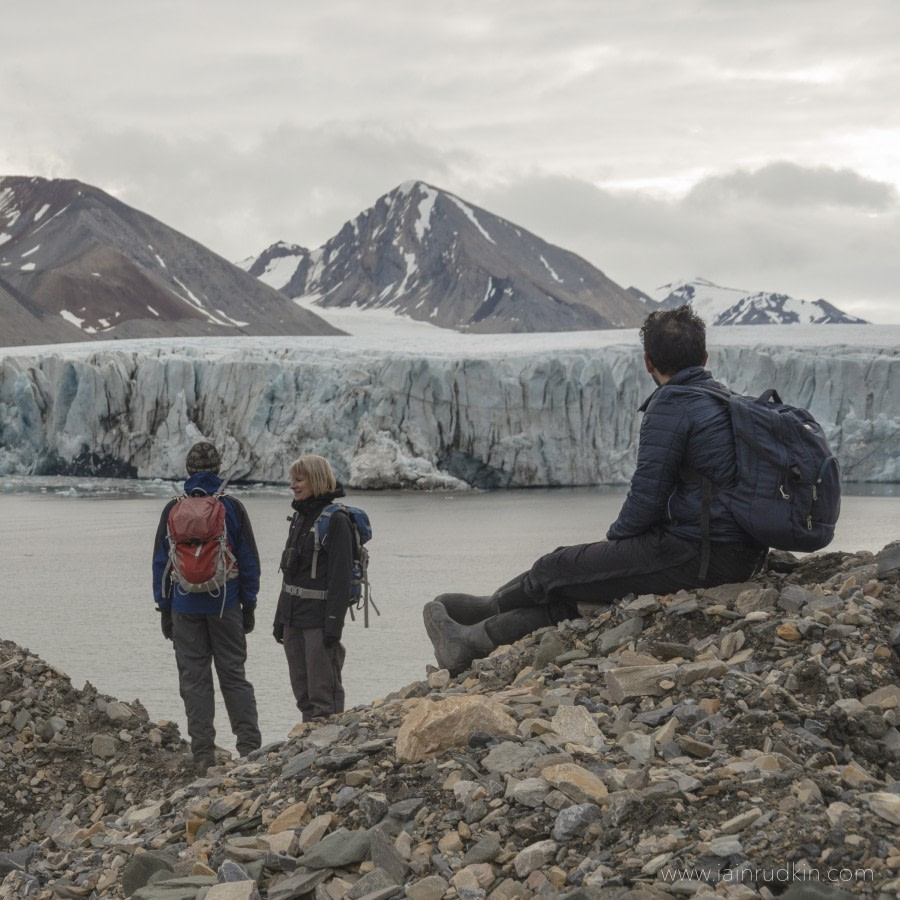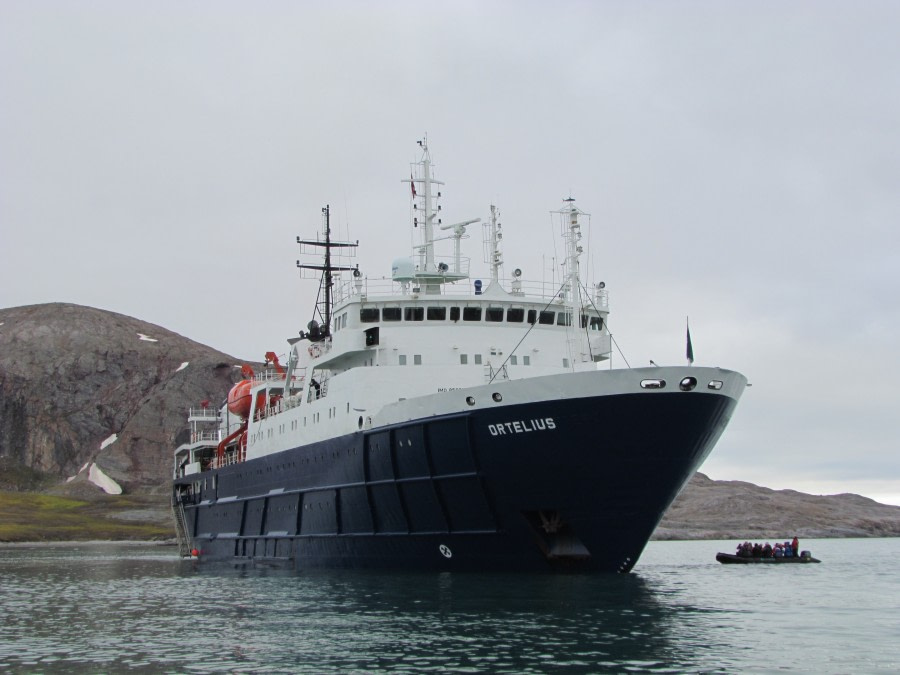| Datum: |
05.08.2017 |
| Position: |
79°43.6‘ N, 011°04.2‘ E |
| Wind: |
W 2 |
| Wetter: |
Overcast/fog |
| Lufttemperatur: |
+6 |
This morning the weather was moody and atmospheric, a true testament to arctic summer with low lying fog and mist. We were woken early with news from Michael that two polar bears were on the beach ahead in Danskoya, feasting on the remains of a whale carcass. Visibility was low, however even from the ship we could clearly see one large male polar bear have a morning feed, whilst a second bear lay patient-ly up the beach headland waiting her turn. Some of us grabbed a quick coffee and morning pastry before gearing up for a morning zodiac cruise. Armed with cameras and binoculars we headed to the gangway. The expedition staff were already in the zodiacs waiting for us on the water. Excitement was abound and we tucked into the boats eager to get closer views of these magnificent creatures. Once all the boats were loaded, we proceeded as a semi-silent flotilla nearer to the carcass and feeding bear. As we approached the wind shifted slightly and we could smell the “freshness” of the whale. However, bears don’t care, this was a major bounty of food, to an otherwise challenging summer of fasting; waiting for the ice and seals to return.
We watched the big male gorge himself for a stretch of time before he was decidedly full enough to leave. He did not depart quickly. We were able to observe the delicate natural balance of bear to bear interaction, as the large male left and the second bear stood waiting up the beach. There was a clear order of dominance and deferral between the bears, without sound or physical contact they seemed to negotiate the terms of feeding and sharing this bounty of food. The male departed and the second bear descended on the carcass. Farther up the hill about a 1 km away, a sow and cub were spotted; likely also waiting their turn. Meanwhile the bridge alerted us of a walrus swimming between the zodiacs and the ship. It was hard to know where to turn our attention! After approximately an hour and three quarters cruising our stom-achs began to call attention, and we headed back to the ship for a late breakfast and transit to the after-noon’s destination. The rest of the morning was relaxed with an opportunity for taking in views of the misty landscape, some of us also opted for a small polar nap in anticipation of the afternoon’s activities.
Just before 12 pm, whales were spotted off the bow. The captain changed course enabling better viewing. It seemed to be 2-3 different individual whales co-operatively feeding and traveling together. On the bridge there was much discussion amongst the expedition staff as to whether we were viewing Fin or the mighty Blue whale. We respectfully followed them for some time, however the whales were not interested much in us and we each went our separate ways; the ship to Worsleyneset, in Liefdefjord and the whales to where ever the food might be. Thus it was also time for our mid-day meal, and we tucked into the dining room for a quick lunch in expectancy of the afternoon landing. As the ship came into position off the east-ern side of Andoyane or “duck islands” in Woodfjord we encountered two more whales close to the ship. These were immediately identified as Blue whales, the largest animal on the planet! It was a likely a cow/calf pair. The captain navigated Ortelius for optimum viewing and we were able to easily observe these magnificent creatures. What luck! The ship proceeded to our launch site and after a brisk five-minute zodiac ride from ship to shore we were ready to explore the tundra. Five different hiking groups set off in dispersed directions. The groups were made up of long or medium hikers as well as the plastic re-search group. We had about two hours to explore the undulating terrain; the landscape designed by per-mafrost and centuries of glaciation. A myriad of blooming saxifrage, Mountain avens, and Arctic poppies painted the tundra. The bird life was captivating, with nesting terns and arctic skua. A pair of red-throated divers were also observed flying overhead the freshwater ponds, likely holding nest of theirs. All too quickly it was time to return to the ship for a quick re-cap of the day and plans for tomorrow before heading into the dining room, where a scrumptious meal awaited us. Post dinner we had already navigated north-northeast to Moffen Island; a protected nature reserve where several dozen Walrus haul out on the low-lying sand bar. Back in our parkas and hats we headed to the decks. Spectacular specimens of nature, the mass of Walrus was keenly respected even from the distance of the ship.
The days are long in the high arctic and it only seemed fitting that the hotel department should of-fer happy hour at 9pm. Fuelled by the excitement of the day and fresh stories to share the atmosphere on the ship was warm and jovial. Either with a night cap or a cup of tea, off to bed we went, to recharge for the next day of exploration in the Svalbard archipelago.
